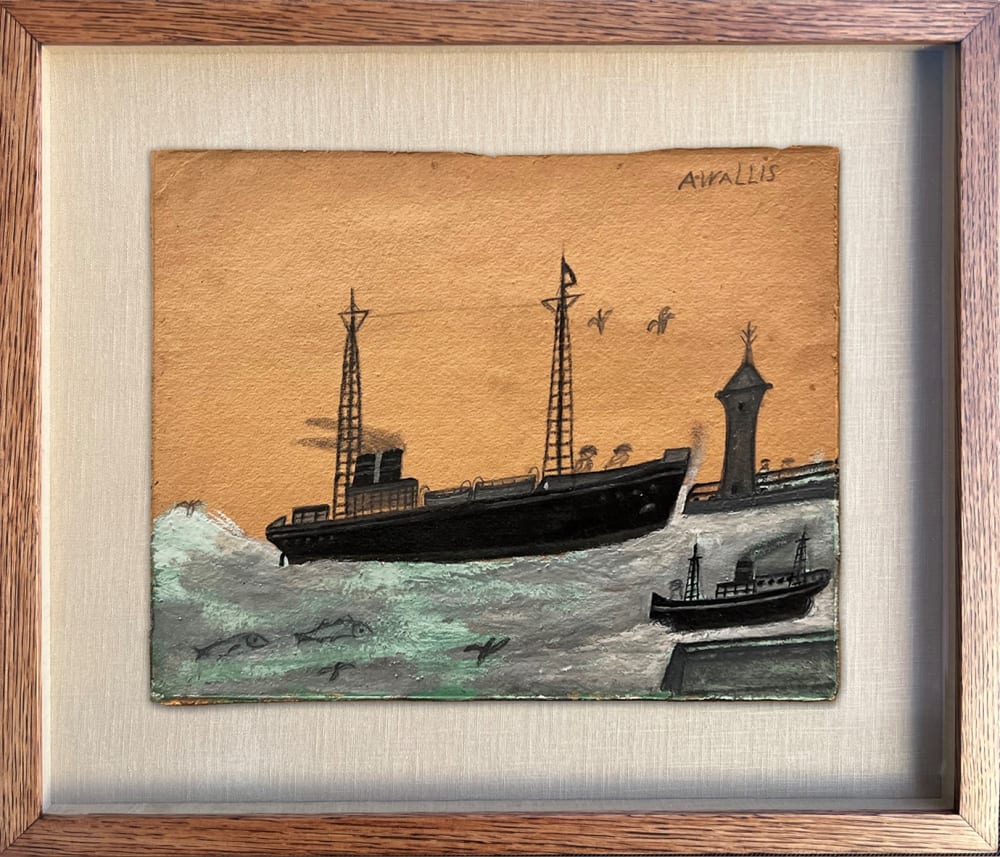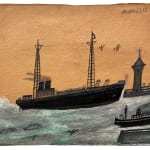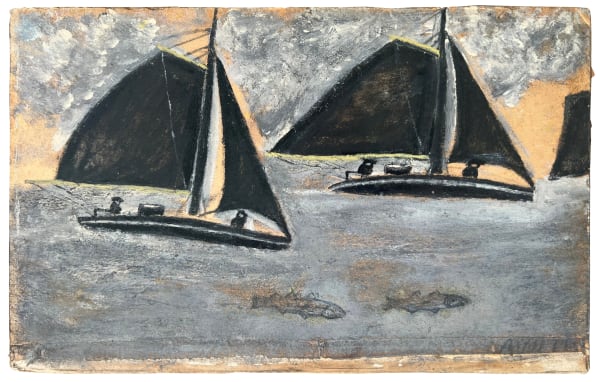Framed: 26.7 x 42.6cm (10 1/2 x 16 3/4ins.)

Ship entering harbour by Alfred Wallis, c. 1930
Alfred Wallis 1855-1942
Framed: 41.5 by 48 cm (16 3/8 by 18 7/8 ins.)
Provenance
Crane Kalman Gallery, where acquired by D. Heyward Esq., April 1964.
New Craftsman Gallery, St. Ives.
The Collection of Mollie and Graham Dark.
In 1928 Ben Nicholson and Christopher Wood happened by chance upon Alfred Wallis's cottage in St Ives. Wallis was 73 but had only been painting for 3 years. The meeting was transformative, for Nicholson in particular, and in part seeded the formation of the colony of modernist painters who later coalesced around him and Barbara Hepworth in St Ives. Nicholson recalled the moment of the encounter: “I went over for the day to St Ives with Kit Wood (Christopher Wood): this was an exciting date, for not only was it the first time I saw St Ives, but on the way back from Porthmeor Beach we passed an open door in Back Road West and through it saw some paintings of ships and houses on odd pieces of paper and cardboard nailed up all over the wall, with particularly large nails thorough the smallest ones. We knocked on the door and inside found Wallis, and the paintings we got from him then were the first he made.”
In Wallis’s work Nicholson and Wood perceived an authentic expression of the naïve, native approach that they were seeking to emulate, unencumbered by artistic training and knowledge. Nicholson commented later that "to Wallis, his paintings were never 'paintings' but actual events". Wallis was largely ignorant of perspective, scale was a matter of what was important to the artist rather than the relative size of objects, and the materials used were what was to hand and what best, to the artist’s mind, executed that part of a painting. Wallis quite happily mixed graphite pencil for rigging and figures, with oil paints to capture the tumultuous seas and dark ship hulls. All qualities that we observe in Ship entering harbour, with for example the ship that most interested Wallis vastly outsizing the ship leaving the harbour. The painting displays all of the artist's favourite motifs: ships, the lighthouse and harbour quays, the sea swell and wake driven by the ship's propellers, birds, fish and men aboard the ships and watching from the quayside.
The birds are believed to be gannets; remarkable birds which Wallis would have observed many times at sea, diving and under water chasing the fish. Robert Jones, Wallis's biographer in Alfred Wallis: Artist and Mariner, who has seen and assisted in cataloguing Ship entering harbour, wrote of the work: "The colour in this painting is wonderful. So simple - just three colours and the colour of the boards. How effective; Wallis does this so well".
The work has a strong provenance dating back to its 1964 sale from the Crane Kalman Gallery in London (label to verso) which was been a leading gallery proponent of Wallis since the early 1960s.
This website uses cookies
This site uses cookies to help make it more useful to you. Please contact us to find out more about our Cookie Policy.





